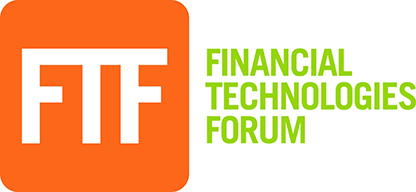Are 401(k) overseers and their clients ready to invest in private equity, real estate, and digital assets?

Grygo is the chief content officer for FTF & FTF News.
Financial planning managers for retirees and others might get the green light and new guardrails from federal officials, helping them include alternative assets, such as private equity, real estate, and digital assets, in 401(k) portfolios, as President Donald J. Trump recently signed an executive order (EO) to that effect.
“More than 90 million Americans participate in employer-sponsored defined-contribution plans, and most of those are currently restricted from investing in alternative assets, unlike wealthy investors and retirement plans for government workers,” according to the executive order, known as “Democratizing Access to Alternative Assets for 401(k) Investors.”
To open 401(k) plans to alternative assets, the executive order requires the U.S. Secretary of Labor to review the U.S. Department of Labor’s guidance on “a fiduciary’s duties regarding alternative asset investments in ERISA-governed 401(k) and other defined-contribution plans,” according to the White House.
Not missing a beat, Department of Labor Secretary Lori Chavez-DeRemer released a statement assuring that there will be swift action on the executive order. In fact, the Labor Department “already took action to rescind the Biden Administration’s guidance that disadvantaged crypto investments,” Chavez-DeRemer says in a prepared statement. “This executive order further supports our efforts to improve flexibility and eliminate unfair one-size-fits-all approaches.”
Labor Department officials will reexamine the guidance “regarding fiduciary decisions, ensuring asset allocation funds that include alternative asset investments,” according to officials. The executive order “also directs the Secretary to clarify the department’s position on alternative assets, including the appropriate fiduciary process associated with offering asset allocation funds containing alternative asset investments under the Employee Retirement Income Security Act of 1974.”
The Secretary of Labor will have “to consult with the Secretary of the Treasury, the Securities and Exchange Commission (SEC) and other federal regulators to determine whether parallel regulatory changes should be made at those agencies,” according to the executive order. In particular, the SEC must “facilitate access to alternative assets for participant-directed defined-contribution retirement savings plans by revising applicable regulations and guidance.”
But there will be opposition to allowing alternatives in 401(k) plans, particularly against private equity. Many conservative retirement plans are likely to shy away from complex real estate investments and the risky volatility of cryptocurrencies and other digital assets. They will wait until innovations such as tokenization prove themselves. The appeal of private equity, though, has been on the rise despite historical reservations about this asset class.
“Let’s be clear: neither 401(k) plan sponsors or 401(k) plan participants — regular, hardworking Americans — are asking to replace stocks and bonds in their 401(k)s with risky private assets,” says Benjamin Schiffrin, director of securities policy for Better Markets, a non-profit group advocating for public interest in the financial markets. “Instead, the private funds industry needs a way to get its hands on the $12 trillion in Americans’ retirement accounts to boost its profits and make up for the fact that institutional investors are fleeing the private markets due to mediocre returns, higher fees, and more risk,” Schiffrin says via a prepared statement after the executive order was announced.
Schiffrin cites the “reasons why 401(k) plans have been considered closed to private markets, and those reasons — a lack of transparency, illiquidity, and high fees — have not changed.”
The other major drawbacks that Schiffrin (and others) warn against are:
- “Private market assets are not subject to the same disclosure requirements as stocks and bonds. Public companies need to tell investors what is going on at those companies. Private companies don’t. Even institutional investors struggle to get the information they need to properly value private market assets. So 401(k) savers would have opaque and risky investments in their retirement accounts;”
- “Private market assets can’t be easily sold. There is no equivalent to the stock market where investors can buy and sell private market assets easily and cheaply. This means private market assets are both harder to value and harder to liquidate;” and
- “Fees are perhaps the biggest reason for 401(k) plans to avoid private market assets. The fees charged by private funds are much higher than the fees to mutual funds. Numerous studies show that, once fees are taken into account, private market investments underperform their publicly traded counterparts.”
But not all segments of the financial services industry are against the President’s actions and are optimistic about the potential for new access to the private equity realm.

Kenneth E. Bentsen, Jr
“Helping Americans build savings for retirement is among the most important roles of the capital markets, and SIFMA strongly supports policy efforts aimed at increasing retirement security for all,” says Kenneth E. Bentsen, Jr., president and CEO of SIFMA, a securities industry advocacy group, in a statement. “Today, U.S. workers increasingly rely on individually funded retirement plans, such as 401ks. As more U.S. companies choose to remain non-public, private markets have developed into a more robust asset class. Access to such investments, however, has been limited primarily to institutional and high net worth investors.”
New policies that “expand access to private markets investments — appropriately tailored under ERISA and SEC rules — could serve to improve diversification, democratize access, and offer more investment choices to the benefit of everyday retirement savers,” Bentsen says. “We applaud the Trump Administration for the focus on this important issue.”
Need a Reprint?